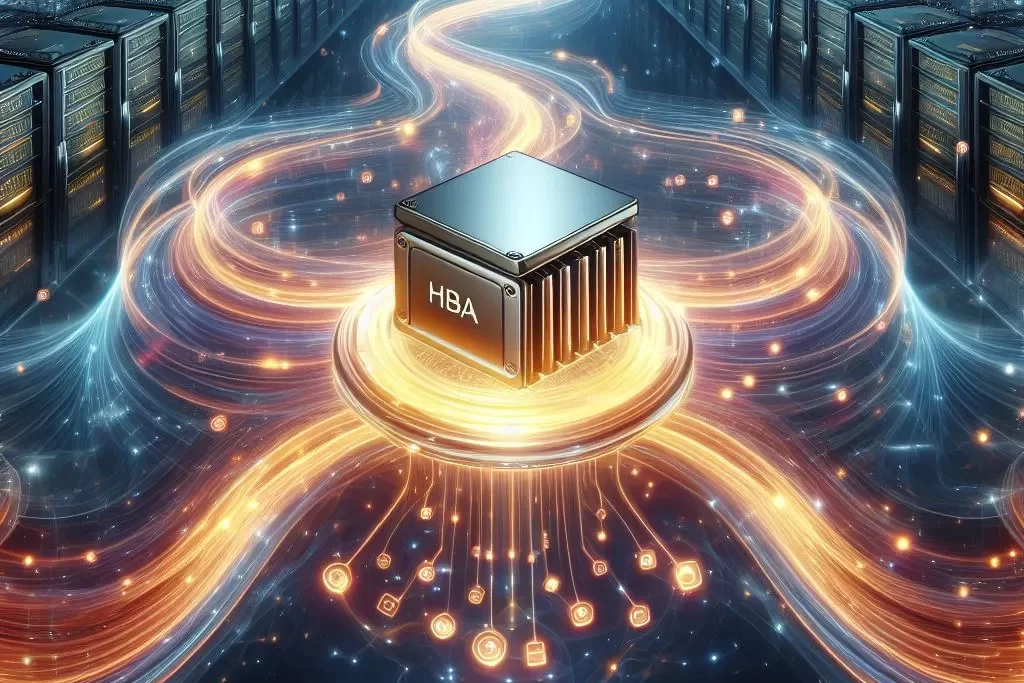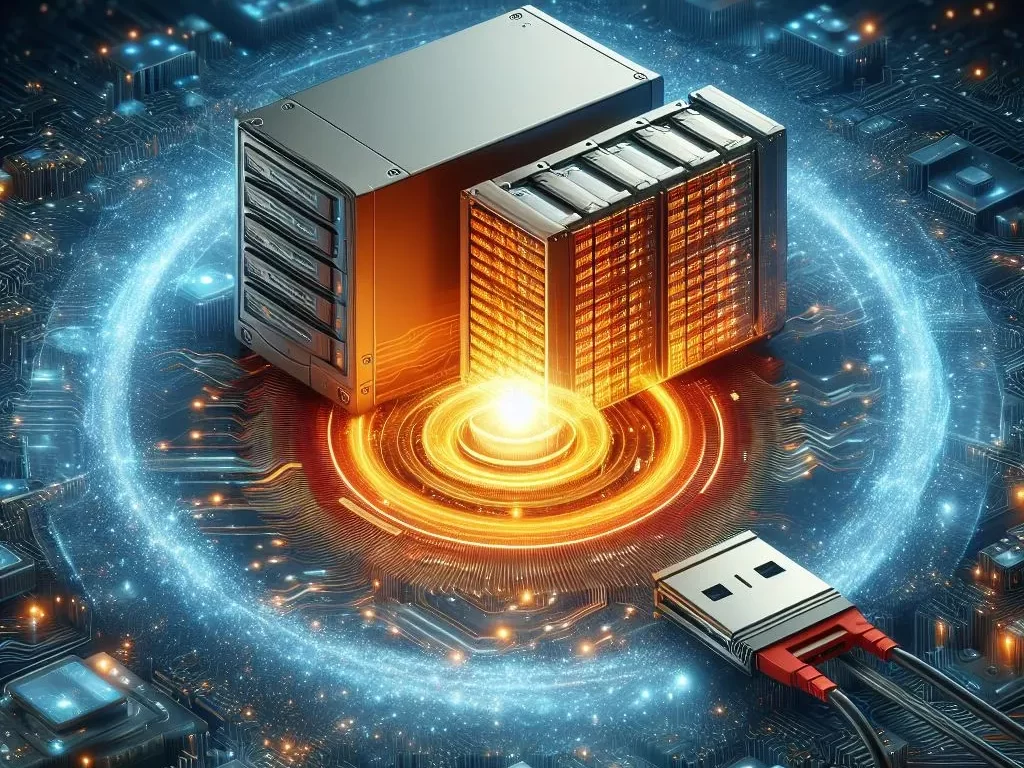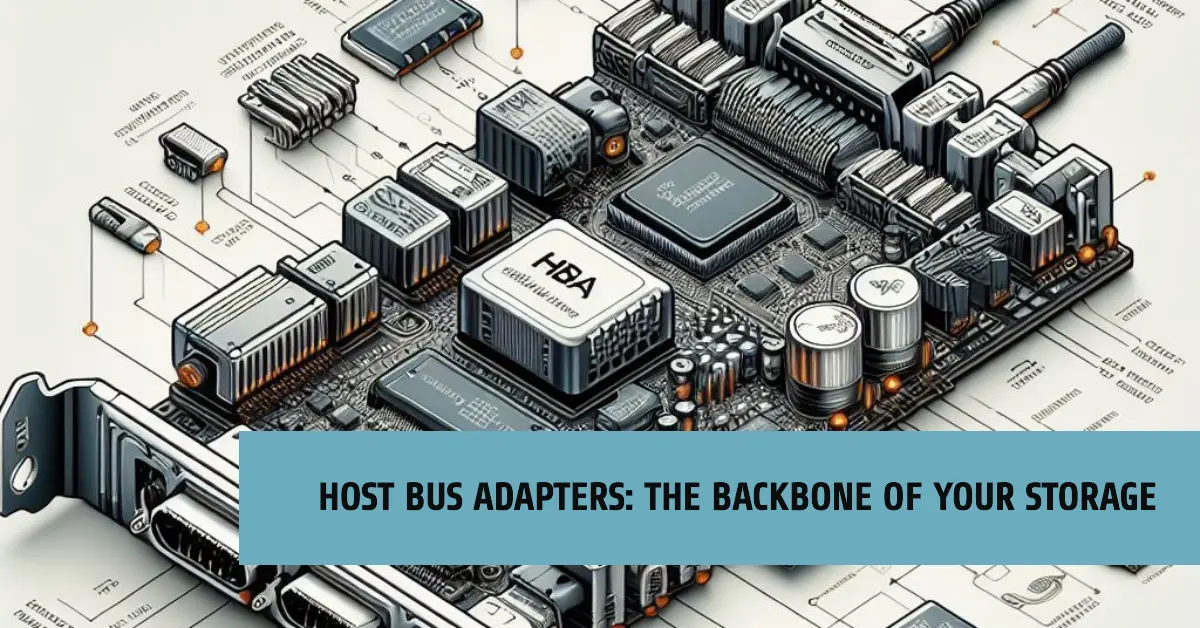Ever wondered how your computer talks to its hard drives, external storage, or even those fancy cloud servers? That’s where a host bus adapter (HBA) comes into play. These unsung heroes of the tech world work behind the scenes, streamlining communication and boosting your system’s overall performance. Let’s dive into what HBAs are and why they matter.
Table of Contents
What is a host bus adapter (HBA)?
Think of an HBA as a translator. It’s a specialized circuit board or integrated chip that sits inside your computer. Its main job is to create a bridge between your computer’s main system (the host) and storage or networking devices. An HBA translates the language your computer speaks into a protocol that storage devices or networks understand. And, importantly, it takes on the hard work of transferring data back and forth, letting your CPU focus on other important tasks.
Types of Host Bus Adapters
HBAs come in different flavors, each catering to specific connection needs:
- Fibre Channel host bus adapters: These are the go-to choice for enterprise-grade, super-fast storage area networks (SANs). They’re known for lightning-quick speeds and rock-solid reliability, making them the perfect fit for demanding data center environments.
- SCSI adapters/SCSI HBAs: SCSI (Small Computer System Interface) is a tried-and-true storage interface. SCSI HBAs connect your system to a whole range of SCSI devices, including older-generation hard drives, tape drives, and more.
- SAS and SATA HBAs: SAS (Serial Attached SCSI) and SATA (Serial ATA) are the standards for modern hard drives and solid-state drives. SAS HBAs offer high-performance connectivity, while SATA HBAs are a more budget-friendly option for everyday storage needs.

Importance of HBAs in Computer Systems
The indispensability of HBAs in modern computer systems cannot be overstated. Without these adapters, peripherals would be unable to communicate effectively with the CPU, rendering them virtually inert. Thus, HBAs form the backbone of hardware integration in computing environments.
Advantages of Using Host Bus Adapters
Performance Enhancement
The deployment of HBAs results in significant performance improvements, particularly in terms of data transfer speeds and latency reduction. This enhancement is instrumental in optimizing the overall responsiveness of computer systems.
Compatibility with New Technology
HBAs are designed to evolve alongside technological advancements, ensuring compatibility with emerging standards and protocols. This adaptability enables users to leverage the latest hardware innovations without encountering compatibility issues.
HBA vs SATA: A Comparison
| Feature | HBA (Host Bus Adapter) | SATA (Serial ATA) |
|---|---|---|
| Definition | A specialized circuit board or chip for storage/network connection | A standard interface for connecting hard drives and SSDs |
| Scope | Broader, including Fibre Channel, SCSI, SAS, iSCSI | Specifically designed for internal storage devices |
| Performance | Varies by HBA type, Fibre Channel excels in speed | Fast, but bandwidth can be limited by the controller |
| Scalability | Excellent, supports numerous devices per adapter | Limited by motherboard SATA ports |
| Hot-swapping | Often supported, especially with SAS and Fibre Channel | Supported with AHCI mode enabled |
| Reliability | Industry-grade HBAs offer high reliability | Varies on type, high-end HBAs can be more expensive |
| Use Cases | Enterprise storage, servers, high-performance workstations | Consumer PCs, laptops, home servers |
| Cost | Varies by type, high-end HBAs can be more expensive | Affordable for everyday storage |
Additional Notes:
- Many modern motherboards have integrated SATA controllers, acting as basic HBAs for SATA drives.
- SAS HBAs can connect both SAS and SATA drives, offering flexibility.
- While SATA is geared towards hard drives and SSDs, HBAs encompass a wider range of storage and networking protocols.

HBA vs RAID: Understanding the Distinction
| Feature | HBA (Host Bus Adapter) | RAID Controller |
|---|---|---|
| Primary Function | Facilitates communication between a host computer and storage devices (can also be networking devices). | Manages multiple physical hard drives, presenting them as a single logical unit for improved performance, redundancy, or both. |
| Data Handling | Focuses on transmitting and receiving data, offloading I/O tasks from the main CPU. | Performs calculations to implement RAID configurations (e.g., striping, mirroring, parity), ensuring data protection and/or speed optimization. |
| Hardware | Often a specialized card with its processor and sometimes dedicated memory. | Often a specialized card with its own processor and sometimes dedicated memory. |
| RAID Support | Does not inherently implement RAID. RAID functionality depends on the storage devices connected. | Essential for creating and managing RAID arrays. |
| Relationship | An HBA is necessary for the system to communicate with the physical hard drives used in a RAID array. | A RAID controller relies on an HBA to connect the RAID array to the host system. |
Key Takeaway: Think of an HBA as a ‘translator’ and a RAID controller as a ‘data manager’ for the hard drives. They often work in tandem with storage systems.
HBAs in Storage Area Networks (SAN)
Support for Large-Scale Data Centers
In enterprise-level environments, such as data centers, HBAs play a crucial role in storage area networks (SANs). These networks rely on high-performance Fibre Channel HBAs to facilitate rapid data transfers and support extensive storage capacity.
Fibre Channels and Data Transfers
Fibre channel HBAs form the backbone of SAN infrastructures, providing the bandwidth and speed required for seamless data transmission. This technology is instrumental in supporting critical operations such as cloud backups and disaster recovery.
Applications of HBA’s
HBAs find their way into a wide range of use cases:
- Data Centers: High-performance HBAs, like Fibre Channel HBAs, help build the backbone of large enterprise data centers, ensuring fast and efficient data access for critical applications.
- Servers: HBAs enable servers to connect to a variety of storage arrays, optimizing data traffic and reducing the load on the server’s main processor.
- Workstations: Powerful workstations, such as those used for video editing or scientific simulations, often rely on HBAs to connect with high-capacity, high-speed storage solutions.
HBAs for Home Usage – Does it Make Sense?
For most home users, integrated motherboard solutions for hard drive connectivity (like SATA) are typically sufficient. However, here are a few scenarios where an HBA for your home setup might be worth considering:
- Home Server: If you’ve built your DIY file server or NAS (Network Attached Storage), an HBA can give you extra connectivity options and a potential performance boost.
- Legacy Equipment: If you’re into retro computing or need to connect older devices, a SCSI HBA can come to the rescue.
Wrapping Up
HBAs are the workhorses that optimize communication within your computer system. Investing in the right HBA is crucial, especially in demanding professional environments.
Let me know if you’d like a deeper dive into a specific aspect of HBAs or have any further questions!
FAQ‘s
- Do all computers have HBAs?
- Most computers have some kind of HBA technology built in, but you may often need expansion cards for specialized connections.
- Are HBAs expensive?
- Prices vary – simple SATA HBAs are budget-friendly, while high-end Fibre Channel HBAs can be costly investments.
- Can I install an HBA myself?
- If you’re comfortable with computer hardware, yes, most HBAs are plug-and-play.
- Do I need specific drivers for an HBA?
- Typically, yes, ensure you get the right drivers from the HBA manufacturer.
- Can HBAs cause bottlenecks?
- Mismatched HBAs or outdated versions can potentially create performance bottlenecks.
